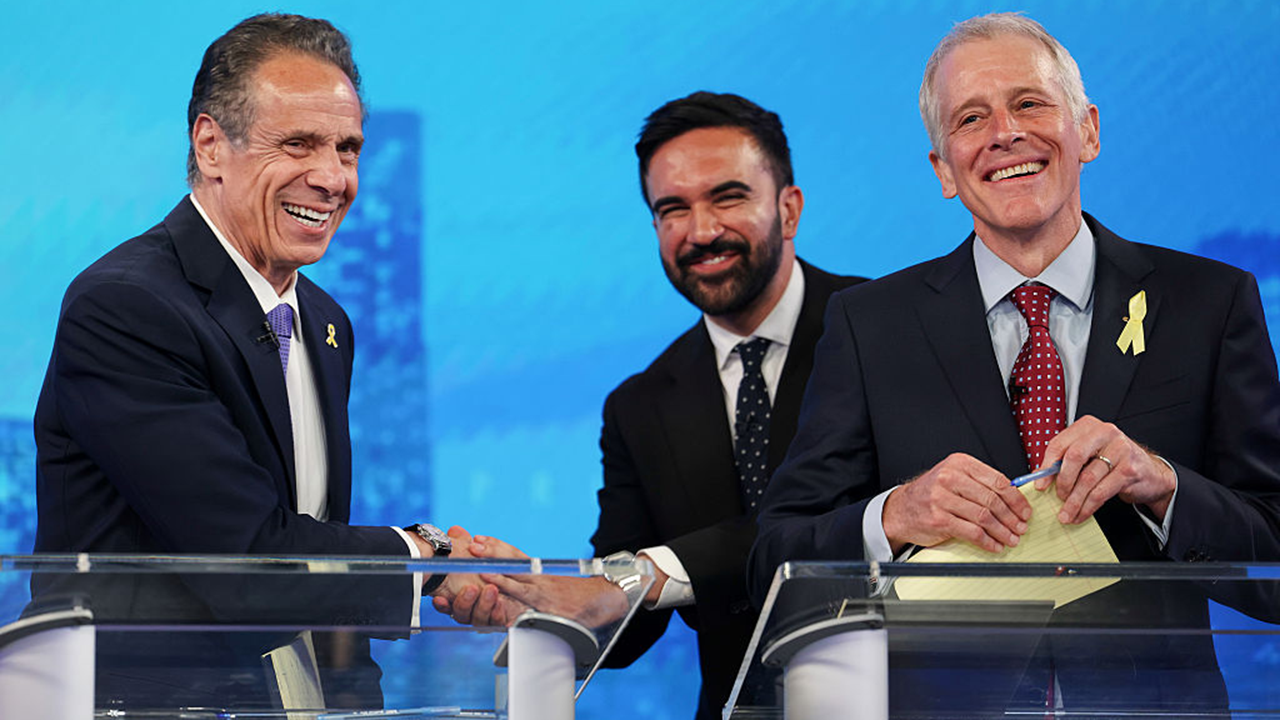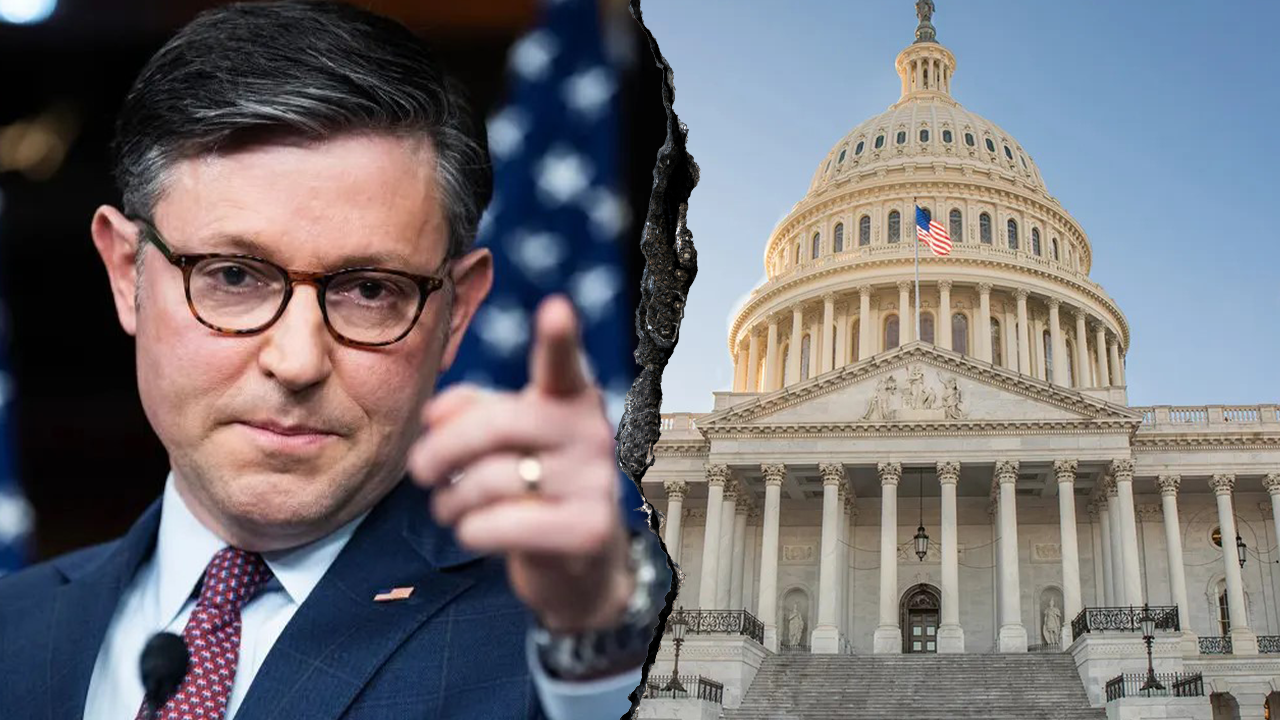Science
RFK Jr. makes sweeping cuts in federal health programs, including CDC, FDA

Robert F. Kennedy Jr. announced plans Thursday to slash the Department of Health and Human Services, cutting nearly a quarter of its workforce in a major restructuring that will consolidate several departments.
According to the Department of Health, the cuts will save $1.8 billion annually and — combined with previous downsizing — reduce the employee headcount from 82,000 to 62,000 full-time employees.
Under a restructuring plan, the number of health department divisions will drop from 28 divisions to 15 — including a new Administration for a Healthy America, or AHA. The number of regional offices will drop from 10 to five.
“We aren’t just reducing bureaucratic sprawl,” the Health secretary said in a statement. “We are realigning the organization with its core mission and our new priorities in reversing the chronic disease epidemic. This Department will do more — a lot more — at a lower cost to the taxpayer.”
Many in the national and global health community have been steeling themselves for dramatic change since Kennedy, an opponent of some vaccines and an advocate of stronger food safety, took office vowing radical reform.
The primary target of Kennedy’s cuts is the Food and Drug Administration, which works to ensure the safety and efficacy of foods, drugs, medical devices, tobacco and other regulated products. It will cut its workforce by 3,500 full-time employees — a reduction that a health department fact sheet said “will not affect drug, medical device, or food reviewers, nor will it impact inspectors.”
The Centers for Disease Control and Prevention, a vast $9-billion agency that works to prevent chronic diseases, fight infectious disease outbreaks and make vaccine recommendations, will also cut 2,400 employees.
Dr. Tom Frieden, the former CDC director who now works as president and CEO of the nonprofit health organization Resolve to Save Lives, said Kennedy’s plans were unlikely to result in greater efficiency.
“Breaking up the agency by sending the experts in non-communicable diseases to another new agency isn’t efficient, it just creates new bureaucracy,” Frieden said in a statement to The Times. “Infectious diseases do not occur in a vacuum, and factors including pre-existing chronic diseases play critical roles in understanding and controlling infectious diseases.”
The CDC, Frieden said, has been the “flagship of public health for generations” as it pursued its “core mission of saving lives and protecting people from health threats of all kinds.”
“No other part of the federal government has the depth and breadth tracking, understanding and supporting communities and providers to stop our leading killers,” Frieden said. “CDC has contributed to saving millions of lives — not just from infectious diseases but also from cancer, heart attack, stroke and other leading causes of death of Americans; better road safety; and prevention of injury and drug overdose.”
The National Institutes of Health, the primary federal government agency for conducting and supporting medical research, will cut 1,200 employees.
A former NIH official and Trump administration critic said the reductions would have far-reaching consequences.
“You can’t cut that many people without drastically having to scale back the work that NIH and HHS are doing,” said Nate Brought, who resigned last month from his position as director of NIH’s Executive Secretariat. “It’s just not possible.”
Brought said he worried that research on the LGBT community and AIDS would be completely cut and studies on cancer and childhood disease would falter.
“We’ve already seen them cut back on HIV and AIDS assistance and, to some extent, research, and now I would not be surprised to see most of that go away as well,” he said. “Cancer research I think is a huge one… Anything that touches on any childhood disease being cut is going to obviously be a huge problem. I don’t think Americans are about children dying to meet their political goals.”
In an address posted to the social media platform X on Thursday, Kennedy painted a dark, apocalyptic picture of the U.S health department, noting that as its budget and staff increased, all that money has failed to improve the health of Americans.
“In fact, the rate of chronic disease and cancer increased dramatically as our department has grown,” he said. “Our lifespan has dropped. So Americans now live six years shorter than Europeans. We have the sickest nation in the world, and we have the highest rate of chronic disease. The US ranks last among 40 developed nations in terms of health, but we spend two to three times more per capita than those nations.”
Kennedy called his department an “inefficient” and “sprawling bureaucracy” that had seen rates of cancer and chronic disease increase as its budget had increased.
“When I arrived, I found that over half of our employees don’t even come to work,” Kennedy said. “HHS has more than 100 communications offices and more than 40 IT departments and dozens of procurement offices and nine HR departments. In many cases, they don’t even talk to each other. They’re mainly operating in their silos.”
During the Biden administration, Kennedy said the health department budget had increased by 38% as staffing increased by 17%.
“But all that money has failed to improve the health of Americans,” he said.
Dorit Reiss, a professor of law at UC San Francisco who specializes in public health, questioned the premise that the nation’s health agencies were overstaffed.
“If anything, the FDA and CDC are understaffed, they don’t have as many people as they need to combat the many challenges we’re facing,” she said, and noted that the nation was in the middle of a measles outbreak. “This isn’t a good time to cut the organization that’s at the front line of fighting it.”
The new Administration for a Healthy America — which according to a fact sheet will “more efficiently coordinate chronic care and disease prevention programs and harmonize health resources to low-income Americans” — will have multiple divisions including, Primary Care, Maternal and Child Health, Mental Health, Environmental Health, HIV/AIDS, and Workforce.
Kennedy admitted that his overhaul of the department would be a “painful period” for the agency. But he said he wanted all employees to rally together “behind a simple, bold mission.”
“I want every HHS employee to wake up every morning asking themselves, ‘What can I do to restore American health today?’ I want to empower everyone in the HHS family to have a sense of purpose and pride and a sense of personal agency and responsibility to this larger goal. We’re going to save taxpayers nearly $2 billion a year, and we’re going to return HHS to its original commitment to public health.”
Brought however, said that the government had never been less efficient than it was now under the Trump administration.
“At this point, morale is at an all-time low, productivity is at an all-time low, and then you’re going to throw something like this on top of it,” he said.
“People who are constantly being told that they’re about to be fired, that their jobs are in danger,” he added, “are not doing their best work, as efficiently and as well as they are capable of and as they were before.”

Science
Trump signs laws to kill California auto emission standards. California AG sues

President Trump signed legislation Thursday seeking to rescind California’s ambitious auto emission standards, including a landmark rule that eventually would have barred sales of new gas-only cars in California by 2035.
In a bill signing ceremony in the East Room of the White House, Trump slammed California’s planned zero-emission requirements for new car sales as “a disaster for our country.” During a meandering 50-minute speech, he argued that California’s regulations would raise car prices, hobble American car companies and place an incredible strain on electrical grids across the country.
“We officially rescue the U.S. auto industry from destruction by terminating the California electric vehicle mandate, once and for all,” Trump said to applause from a room filled with conservative legislators and business representatives.
“This horrible scheme would effectively abolish the internal combustion engine, which most people prefer,” Trump continued.
Trump boasted the legislation would “kill the California mandates forever,” declaring it would dash progressive plans to accelerate the adoption of electric vehicles.
“They can’t take us to court,” he said. “They can’t do any of the things they can do with the executive orders, and it’s permanent.”
But moments after he signed the three bills into law, California Atty. Gen. Rob Bonta led a coalition of 10 attorneys general in filing a lawsuit to challenge Trump’s laws, which had been approved by Congress in May. Bonta argued Congress unlawfully acted to upend California’s emission rules by invoking the Congressional Review Act, a law designed to allow legislators to rescind major federal rules adopted toward the end of a presidential administration. California and several congressional rules experts have said the Congressional Review Act could not be used to overturn federal waivers that enable California to enforce its auto emission standards.
“We’re doing this to ensure future generations inherit a livable planet with breathable air,” Bonta said at a news conference Thursday morning. “Meanwhile, the president’s divisive, partisan agenda is jeopardizing our lives, our economy and our environment. It’s reckless, it’s illegal, and because of it, we’ll be seeing the Trump administration in court again for the 26th time.”
By signing these three bills into law, Trump invalidated some of the most innovative regulations adopted by California environmental rule makers and undercut California’s long-standing authority to set more rigorous vehicle emission standards:
- The Advanced Clean Cars II rule would’ve required car companies to sell California dealerships an increasing percentage of new zero-emission or long-range hybrid vehicles, starting at 35% in 2026. The regulation would’ve culminated in a ban on the sale of new gas-only cars in California in 2035.
- Advanced Clean Trucks rule, which would’ve required a significant percentage of medium- and heavy-duty truck sales be zero-emission by 2035.
- The Heavy-Duty Engine and Vehicle Omnibus rule that established cleaner engine standards and required warranties for new heavy-duty vehicles.
In his second term, Trump has repeatedly attacked California’s ambitious auto emission rules, including the Advanced Clean Cars II regulation, which he has incorrectly described as an electric vehicle mandate. The rule does not block the sale of used gas-only cars or other zero-emission vehicles, like hydrogen-powered cars.
Because of its historically bad air quality, California is the only state that has been given permission to adopt auto emission standards that are stricter than federal standards. Many other Democratic states adhere to California’s auto emission rules, which has put pressure on auto companies to comply with the state’s progressive rules. That has irked a number of Republicans, including Trump, who believe there should be a unified slate of auto standards set by the federal government.
“It’s had us tied up in knots for years,” Trump said in his remarks Thursday morning. “They’d pass these crazy rules in California, and 17 states would go by them. The automakers didn’t know what to do because they’re really building cars for two countries.”
But California needs a federal waiver from the U.S. Environmental Protection Agency for its pace-setting auto emission standards to be enforceable.
Michael Regan, the U.S. EPA administrator during the Biden administration, granted several California waivers, including two in December 2024.
Prior to the Senate vote to overturn California auto emission rules, both
the Senate parliamentarian and Government Accountability Office had determined these federal waivers are not rules, they are administrative orders, not subject to the Congressional Review Act.
Despite those rulings, the Senate moved ahead with the vote and advanced the bill to Trump’s desk with a simple majority vote.
Science
What the Golden Ratio Says About Your Bellybutton
Science
COVID 'razor blade throat' rises as new subvariant spreads in California

• COVID rising in wastewater in parts of California
• New subvariant, ‘Nimbus,’ increasingly dominant nationally
• Concerns rise about Trump’s appointees making vaccine access more difficult
COVID-19 appears to be on the rise in some parts of California as a new, highly contagious subvariant — featuring “razor blade throat” symptoms overseas — is becoming increasingly dominant.
Nicknamed “Nimbus,” the new subvariant NB.1.8.1 has been described in news reports in China as having more obvious signs of “razor blade throat” — what patients describe as feeling like their throats are studded with razor blades.
Although “razor blade throat” may seem like a new term, the description of incredibly painful sore throats associated with COVID-19 has emerged before in the United States, like having a throat that feels like it’s covered with shards of glass. But the increased attention to this symptom comes as the Nimbus subvariant has caused surges of COVID-19 in other countries.
“Before Omicron, I think most people presented with the usual loss of taste and smell as the predominant symptom and shortness of breath,” said Dr. Peter Chin-Hong, a UC San Francisco infectious-disease expert. But as COVID has become less likely to require hospitalization, “people are focusing on these other aspects of symptoms,” such as an extraordinarily painful sore throat.
Part of the Omicron family, Nimbus is now one of the most dominant coronavirus subvariants nationally. For the two-week period that ended June 7, Nimbus comprised an estimated 37% of the nation’s coronavirus samples, now roughly even with the subvariant LP.8.1, probably responsible for 38% of circulating virus. LP.8.1 has been dominant over the past few months, according to the Centers for Disease Control and Prevention.
The Nimbus subvariant has also been increasing since May in California, the state Department of Public Health said in an email to the Los Angeles Times. Projections suggest the Nimbus subvariant comprises 55% of circulating virus in California, up from observations of just 2% in April, the agency said Friday.
“We are seeing some indicators of increased COVID-19 activity, including the rise of the NB.1.8.1 variant, elevated coronavirus levels in wastewater, and an uptick in the test positivity rate,” Dr. Elizabeth Hudson, regional chief of infectious diseases for Kaiser Permanente Southern California, wrote in an email to The Times.
“Wastewater surveillance across Southern California shows variability: Santa Barbara watersheds are reporting moderate-to-high levels, Ventura and Los Angeles counties are seeing low-to-moderate levels, Riverside is reporting low levels, while San Bernardino is experiencing high activity,” Hudson said.
While viral concentrations remain relatively low, Los Angeles County has observed an increase in coronavirus levels in sewage, the local Department of Public Health told The Times. For the week that ended May 30 — the most recent available — viral levels in wastewater rose by 13% versus a comparable period several weeks earlier.
In addition, there is a slight increase in the rate in which COVID surveillance tests are turning up positive in L.A. County. For the most recent week, 5% of COVID surveillance tests showed positive results for infection, up from 3.8% in early May. COVID-related visits to the emergency room remain low in Los Angeles County.
There were still low rates of COVID-19 illness in San Francisco, the local Department of Public Health said.
Yet coronavirus levels in wastewater in Northern California’s most populous county, Santa Clara County, are starting to increase, “just as they have over past summers,” the local Public Health Department said in an email to The Times. As of Friday, coronavirus levels in the sewershed of San José was considered “high.” Viral levels were “medium” in Palo Alto and “low” in Sunnyvale. Nimbus is the most common subvariant in the county.
Across California, coronavirus levels in wastewater are at a “medium” level; the last time viral levels were consistently “low” was in April, according to the state Department of Public Health’s website.
“Future seasonal increases in disease levels are likely,” the California Department of Public Health said in an email to The Times Friday.
The uptick in COVID comes as many medical professional organizations and some state and local health officials are objecting to the Trump administration’s recent moves on vaccine policy, which some experts fear will make it more difficult for people to get vaccinated against COVID-19 and other diseases.
Federal officials in May weakened the CDC’s official recommendations from recommending the COVID vaccine to everyone age 6 months and up. The CDC now offers “no guidance” on whether healthy pregnant women should get the COVID vaccine, and now asks that parents of healthy children talk with a healthcare provider before asking that their kids get inoculated.
The American College of Obstetricians and Gynecologists issued a rebuke of the changing vaccine recommendations for pregnant women, accusing the U.S. Department of Health and Human Services — led by the vaccine-skeptic secretary, Robert F. Kennedy Jr. — of “propagating misinformation.” The American Pharmacists Assn. wrote that dropping the vaccine recommendation for pregnant women did “not appear to be based on the scientific evidence provided over the last few years.”
And an open letter by 30 organizations specializing in health — including the American Medical Assn. — said that “we must continue to prioritize high levels of COVID-19 vaccine coverage in pregnant patients to protect them and their infants after birth.”
Chin-Hong said he recommends pregnant women get vaccinated “one million percent.”
“The data are incredibly clear that pregnant women do have a higher rate of complications, hospitalization and premature births when they did not get vaccinated [against COVID] compared to the ones that did,” said Dr. Yvonne Maldonado, an infectious-disease expert at Stanford University. The vaccines also help newborns, as antibodies generated by the mom-to-be cross the placenta, and can protect the newborn for a certain number of months, she said.
That’s essential protection, given that newborns can’t be vaccinated under 6 months of age, Maldonado said. If newborns are infected, they have relatively high rates of hospitalization — as high as those age 65 and over, Maldonado said.
Then, last week, Kennedy abruptly fired all members of a highly influential committee that advises the CDC on vaccine policy. In an op-ed to the Wall Street Journal, Kennedy criticized the previous members of the Advisory Committee on Immunization Practices, founded in 1964, as being “plagued with persistent conflicts of interest and has become little more than a rubber stamp for any vaccine.”
Maldonado, a professor in pediatric infectious diseases and epidemiology, was one of the fired vaccine advisors. She called their mass dismissal unprecedented in the history of the ACIP.
“We are absolutely in uncharted territory here,” Maldonado said. “I think it’s going to be really hard to understand what vaccines are going to go forward. … They’re also going to review the entire vaccination schedule.”
In general, routine review of vaccine schedules are a good thing, and prior reviews have concluded that the current recommended shots are safe and effective, Maldonado said. But the criteria being circulated by recently appointed federal officials “could actually wind up refusing to recommend, say, measles vaccine or HPV vaccine, because I’ve seen some of the misinformation that has been out there about some of these vaccines. …
“And if any of that is accepted as truth, we could wind up losing some of these vaccines,” Maldonado said.
“The question, then, is: ‘Would those vaccines disappear?’ … Hard to know,” she said. But it’s also possible that federal officials could begin to stop paying for certain vaccines to be administered to children of low-income families.
She rejected Kennedy’s characterization of the committee as a rubber stamp for vaccine makers. “Generally, a decision to not pursue a vaccine happens usually well before anything gets to a vote,” Maldonado said.
A joint statement by the governors of California, Oregon and Washington condemned Kennedy’s dismissal of the vaccine advisors as “deeply troubling for the health of the nation” and defended the fired vaccine advisors as having been “carefully screened for major conflicts of interest.”
“We have grave concerns about the integrity and transparency of upcoming federal vaccine recommendations and will continue to collaborate to ensure that science and sound medicine prevail to prevent any loss of life,” Gov. Gavin Newsom said in a statement Thursday.
Traditionally, the advisory committee’s recommendations on who should get vaccinated were adopted by the director of the CDC.
“It was one of the most depressing weeks in American health … a dark period for everyone right now, and demoralizing,” said Chin-Hong, of UC San Francisco. “It’s very destabilizing.”
The American Academy of Pediatrics called the purge of the vaccine advisors “an escalating effort by the administration to silence independent medical expertise and stoke distrust in lifesaving vaccines.” Kennedy’s handpicked replacements include people known for their criticism of vaccines, the Associated Press reported.
The mass firing “likely puts vaccine access and insurance coverage at serious risk,” the L.A. County Department of Public Health said in a statement. “It corrodes trust in the recommended schedule for vaccines, not only by the public, but by medical providers who rely on the ACIP for science-based, apolitical guidance.”
The departments of public health for California, Oregon and Washington said they “continue to recommend all individuals age 6 months and older should have access and the choice to receive currently authorized COVID-19 vaccines, with an emphasis on protecting higher risk individuals, such as infants and toddlers, pregnant individuals, and others with risks for serious disease.”
The L.A. County Department of Public Health said in a statement that, “at this time in Los Angeles County, current vaccine recommendations for persons aged 6 months and older to receive the COVID-19 vaccine remain in effect and insurance coverage for COVID-19 vaccines is still in place.”
-

 News1 week ago
News1 week agoA former police chief who escaped from an Arkansas prison is captured
-

 Technology1 week ago
Technology1 week agoXbox console games are suddenly showing up inside the Xbox PC app
-

 Arkansas1 week ago
Arkansas1 week agoTennessee baseball coach Tony Vitello has funny apology on ESPN at super regional vs Arkansas
-

 Technology1 week ago
Technology1 week agoMassive DMV phishing scam tricks drivers with fake texts
-

 Politics1 week ago
Politics1 week agoVideo: Why the U.S. Brought Back Kilmar Abrego Garcia
-

 World1 week ago
World1 week agoColombia’s would-be presidential candidate shot at Bogota rally
-

 Texas1 week ago
Texas1 week agoBlack bear spotted at North Texas gas station
-

 Politics1 week ago
Politics1 week agoNational Guard to be deployed in Los Angeles County as anti-ICE protests rage: border czar Tom Homan
















